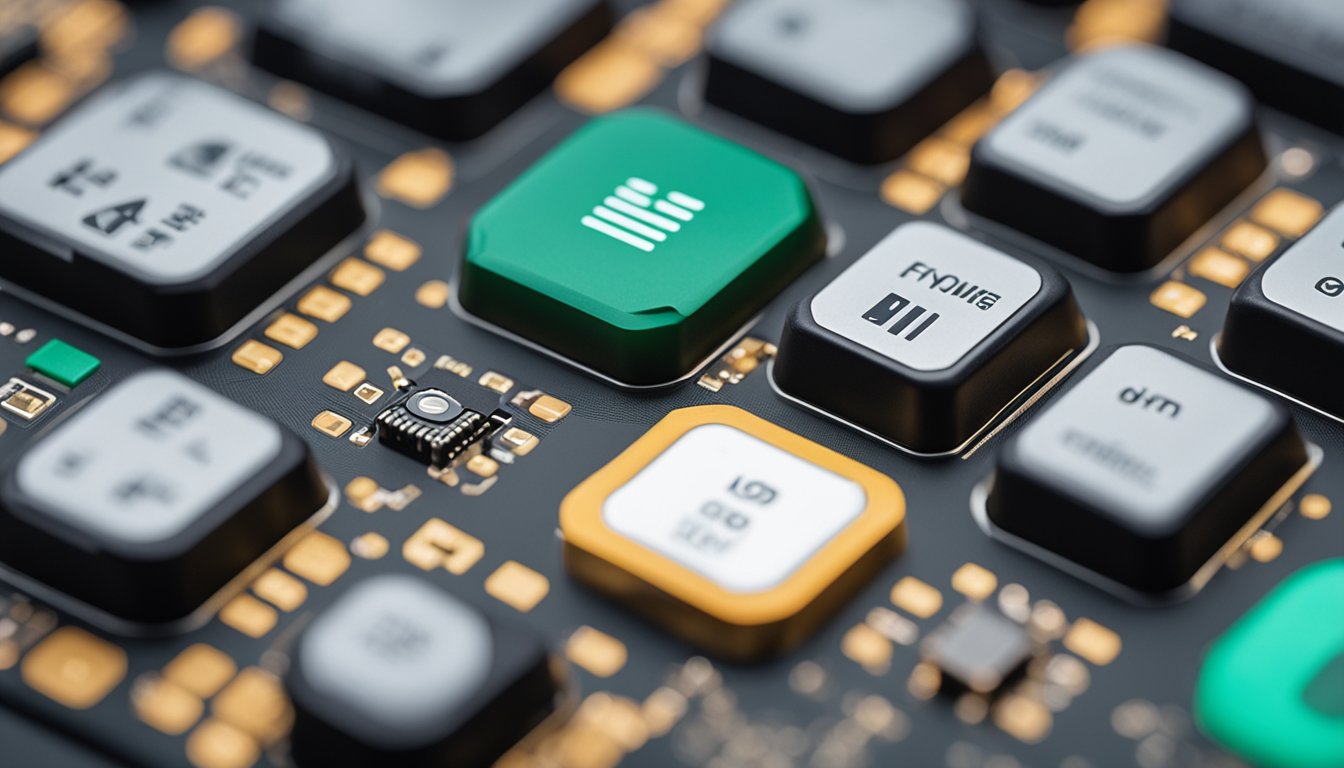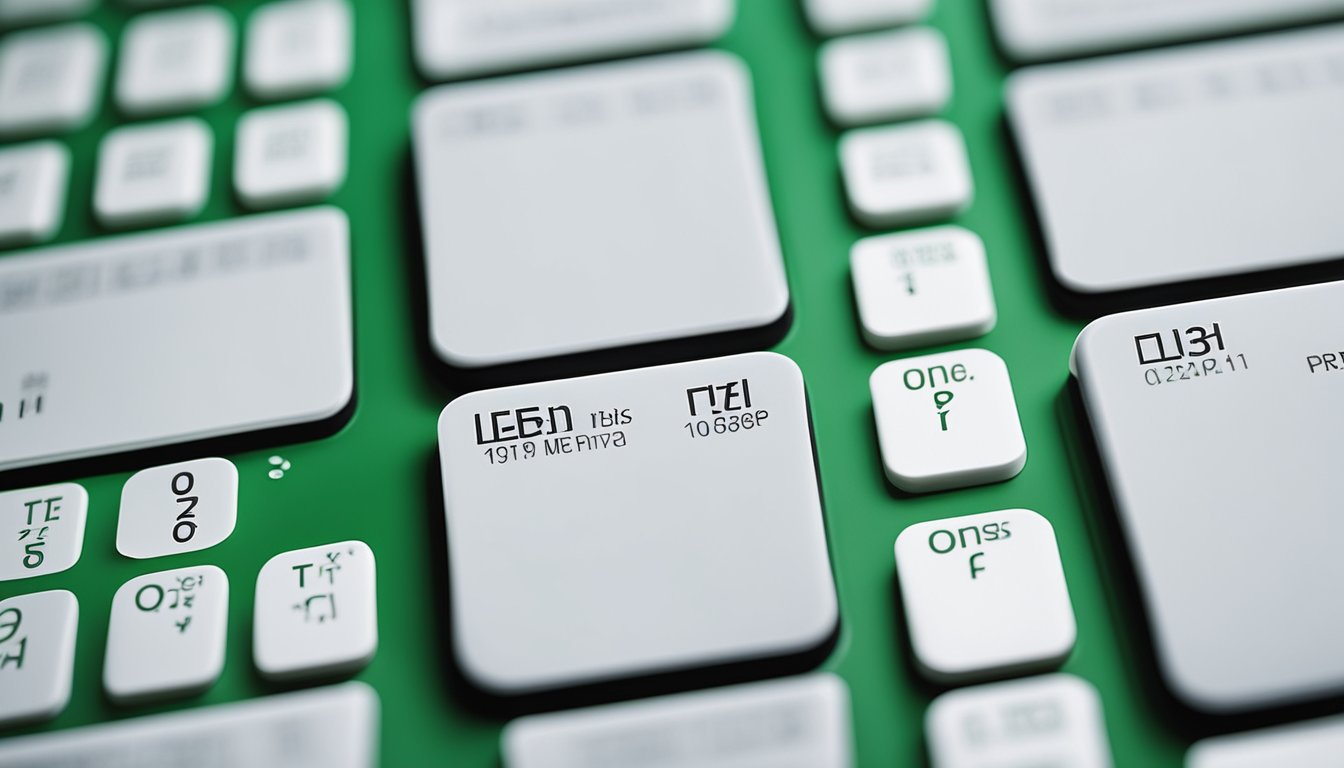Contact
Write to Us And We Would Be Happy to Advise You.
Do you have any questions, or would you like to speak directly with a representative?
By peter
Non-tactile membrane switches are becoming increasingly popular in a wide range of industries due to their numerous advantages over traditional mechanical switches. Unlike tactile switches that provide a physical feedback when pressed, non-tactile switches do not provide any physical feedback, relying solely on visual or audible cues to confirm input. This makes them ideal for applications that require a sleek and compact design, as well as those that require a high level of customization.

Non-tactile membrane switches are made up of several layers of materials, including a graphic overlay, adhesive spacer, and circuit layer. These layers are laminated together to create a thin and flexible switch that can be customized to meet the specific needs of each application. The graphic overlay can be printed with any design, including text, symbols, and images, while the circuit layer can be designed to include any number of switches, LEDs, and other electronic components.
Non-tactile membrane switches are used in a wide range of applications, including medical devices, consumer electronics, and industrial equipment. They are ideal for applications that require a high level of customization, as well as those that require a sleek and compact design. They are also highly reliable, with no moving parts to wear out or break down over time. With their numerous advantages, non-tactile membrane switches are quickly becoming the preferred choice for many designers and engineers.

Non-tactile membrane switches are a type of user interface that provides a flat, smooth surface without any protruding buttons. These switches are made of several layers of materials, including a graphic overlay, adhesive spacer, and circuit layer. They are commonly used in various industries, including medical, industrial, and consumer electronics.
Non-tactile membrane switches operate on the principle of capacitance. When a user presses a button on the switch, it creates a change in capacitance between the conductive layers. This change in capacitance is detected by the switch’s controller, which then sends a signal to the device to perform the desired action.
One of the advantages of non-tactile switches is that they can be designed to actuate with a light touch. This makes them ideal for applications where the user needs to make quick, precise inputs. Additionally, non-tactile switches can be designed to be very thin, which makes them ideal for applications where space is limited.
Non-tactile membrane switches are constructed from several layers of materials. The top layer is a graphic overlay that provides the user interface. This layer is typically made from a durable material, such as polyester or polycarbonate, and is printed with graphics and text.
Beneath the graphic overlay is an adhesive spacer layer. This layer provides a gap between the graphic overlay and the circuit layer, which prevents accidental actuation of the switch. The adhesive spacer layer is typically made from a pressure-sensitive adhesive material.
The bottom layer of the switch is the circuit layer. This layer contains the conductive traces that carry the electrical signals between the switch and the device. The circuit layer is typically made from a flexible material, such as polyester or polyimide, which allows the switch to be bent and flexed without breaking.
In conclusion, non-tactile membrane switches are a versatile and reliable user interface that can be customized to meet the specific needs of various applications. They are designed to be thin, durable, and easy to use, making them ideal for a wide range of industries and applications.
Non-tactile membrane switches are a popular choice in many applications due to their sleek and flat design. They are also highly customizable, allowing for a wide range of graphic overlay designs and circuit layouts. Here are some key considerations when designing and customizing a non-tactile membrane switch.
The graphic overlay is the top layer of the membrane switch, and it is where the user interacts with the device. As such, it is important to design an overlay that is visually appealing, easy to read, and durable.
When designing the graphic overlay, consider the following:
The circuit layout and components of a non-tactile membrane switch are important considerations when customizing the device. The circuit layout determines how the switch functions, while the components determine the switch’s durability and reliability.
When designing the circuit layout, consider the following:
When selecting components, consider the following:
By carefully considering the graphic overlay design and circuit layout and components, you can customize a non-tactile membrane switch that is both visually appealing and highly functional.
Non-tactile membrane switches are widely used in various applications due to their low profile, cost-effectiveness, and ease of use. Here are some common applications and uses of non-tactile membrane switches:
Non-tactile membrane switches are commonly used in consumer electronics such as remote controls, calculators, and digital clocks. These switches provide a smooth and sleek interface that is easy to clean and maintain. They can also be backlit, making them easy to see in low light conditions.
Non-tactile membrane switches are also used in medical equipment such as blood analyzers and patient monitors. These switches are ideal for medical equipment as they are easy to clean and maintain, and do not require physical pressure to operate. This is especially important in medical settings where hygiene is critical.
Non-tactile membrane switches are commonly used in industrial controls such as manufacturing equipment and machinery. These switches are ideal for industrial settings as they are durable and can withstand harsh environments. They are also easy to operate and maintain, which is important in fast-paced industrial settings.
In summary, non-tactile membrane switches are versatile and can be used in a variety of applications. They provide a smooth and sleek interface that is easy to use and maintain. Whether you need a switch for consumer electronics, medical equipment, or industrial controls, a non-tactile membrane switch may be the right choice for you.
When it comes to designing an interface for your product, choosing the right type of membrane switch is essential. Non-tactile membrane switches offer several advantages over tactile switches, making them an ideal choice for many applications. In this section, we will discuss some of the key benefits of non-tactile membrane switches.
One of the most significant advantages of non-tactile membrane switches is their durability. Since non-tactile switches do not have any moving parts, they are less likely to wear out or break down over time. This makes them an excellent choice for products that will be used frequently or in harsh environments.
Non-tactile membrane switches are also more cost-effective than their tactile counterparts. The manufacturing process for non-tactile switches is simpler, which means that they can be produced more quickly and at a lower cost. Additionally, since non-tactile switches do not require any additional hardware, such as dome switches or metal snap domes, they are more affordable to produce.
Non-tactile membrane switches are also highly versatile. They can be designed to work with a wide range of input devices, including touchscreens, sliders, and rotary switches. This makes them an excellent choice for products that require a variety of input methods. Additionally, non-tactile switches can be designed to be backlit, which makes them easy to use in low-light conditions.
In summary, non-tactile membrane switches offer several advantages over tactile switches, including durability, cost-effectiveness, and versatility. If you are designing a product that requires a reliable and cost-effective interface, a non-tactile membrane switch may be the right choice for you.
The manufacturing process of non-tactile membrane switches is a complex one that involves several stages. The process starts with designing the switch layout, followed by printing and cutting the membrane, and ends with the assembly and testing of the final product.
The first step in the manufacturing process is printing the switch layout on a polyester or polycarbonate film using a specialized printing technique. This technique involves printing the circuitry, symbols, and graphics on the film’s surface using conductive and non-conductive inks. The printing process is followed by cutting the film using a laser or a die-cutting machine to create the switch’s desired shape.
Once the film is printed and cut, it is time to assemble the switch. The switch’s assembly involves layering the film with other components such as adhesive layers, spacer layers, and graphic overlays. The assembly process is followed by testing the switch’s functionality to ensure that it meets the design specifications. The testing process involves checking the circuitry’s conductivity, actuation force, and tactile feedback.
Overall, the manufacturing process of non-tactile membrane switches is a precise and intricate one that requires specialized equipment and expertise. The process’s success depends on the manufacturer’s ability to design, print, cut, assemble, and test the switch accurately and consistently.
Do you have any questions, or would you like to speak directly with a representative?